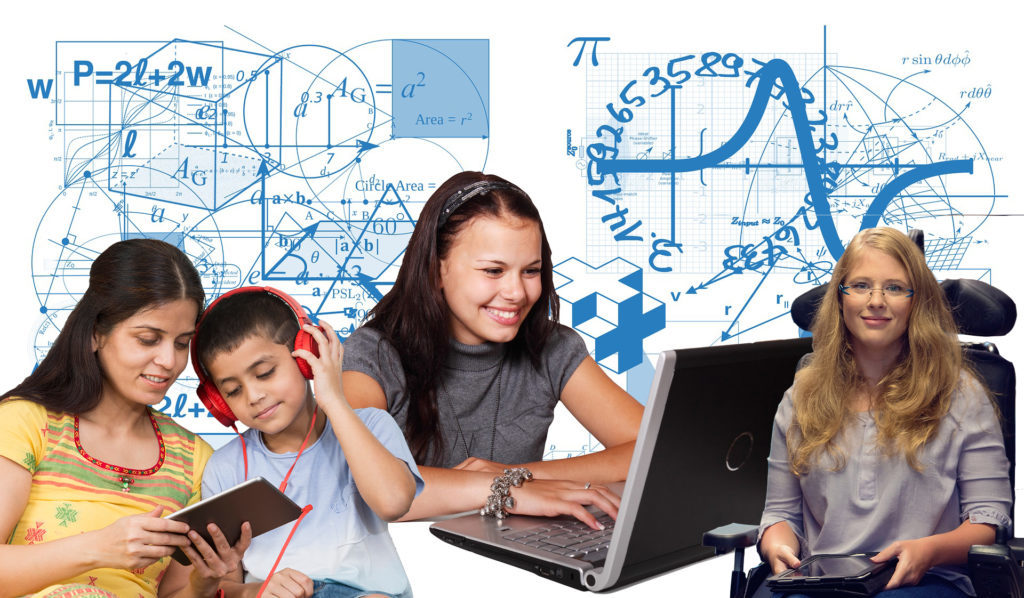Report Examines Technology that is Changing the Educational Landscape
By Laura Deck, posted on September 17, 2019The 2019 DIAGRAM Center Report examines opportunities relating to accessible K-12 computer science, data visualization, multimodal user interfaces, personalized learning, and sonification for students with disabilities
The DIAGRAM Center recently released the 2019 DIAGRAM Report that identifies key technologies and trends having the biggest impact or potential for impact on the education of students with disabilities in the United States. This report is a useful guide for learners, educators, parents, and other professionals who serve students with disabilities.

Report Features Leading Edge Research and Resources
The report examines five technology-related topics and describes current use, challenges and opportunities, case studies and examples, actions, and additional resources. Members of the DIAGRAM community selected the topics and authored the chapters, so readers learn directly from experts about how the various technologies are impacting students with disabilities. The chapters, authors, and notable highlights are listed below:
Accessible K-12 Computer Science – by Richard Ladner, University of Washington
Openings in computer science occupations between 2014 and 2024 are expected to be one million. In order for students with disabilities to acquire the skills to qualify for these jobs, curricula and programming languages need to be accessible. Programming languages such as Quorum and Blocks4All as well as initiatives like Code.org and AccessCSforAll are making computer science inclusive to all students.
Data Visualizations – by Douglas Schepers, Fizz Studio
In today’s world of information overload, visual representations of data such as graphs, charts, and diagrams are becoming increasingly pervasive. Students with visual impairments and cognitive disabilities benefit from techniques for making data visualizations accessible such as the use of SVG graphics, tactiles, and haptics.
Multimodal User Interfaces – by Emily Moore, University of Colorado Boulder and Jenna Gorlewicz, Saint Louis University
Multimodal user interfaces provide multiple modes of communication between the user and the technology so that users can interact in a preferred way. Individuals with disabilities can engage fully using touchscreens, auditory descriptions and sounds, mouse or keyboard manipulation, 2D tactiles, and video captions. As these fields expand, more people with disabilities are being included in the design process directly, providing a new pathway for workforce and career development while also producing new technologies that better serve all people.
Personalized Learning – by Alan Harnum, Inclusive Design Research Centre
Technology-supported personalized learning is a natural fit for students with disabilities, but real-world results have been mixed. This chapter offers best practice guidelines and early success stories such as LEAP Innovations and Brooklyn Laboratory Charter School.
Sonification – by Bruce Walker, Georgia Institute of Technology
Displaying data via visual graphs is used in all areas of society, especially in education and STEM contexts. However, for learners who cannot take full advantage of visual graphs, alternative formats, such as sound, can be crucial. Sonification, the use of non-speech sound to represent information, provides a dynamic dimension to educational content and is useful for students with visual impairments.
Report Contains Advanced Accessibility Features
In addition to the expert content, the report contains advanced accessibility features including SVG images such as bar charts that support screen reader exploration, accessible tables that link column and row headers, extensive alt-text for image descriptions, embedded simulations with screen reader support, and line graphs with sound to represent increases and decreases along x and y axes. The report is also optimized for mobile, and users can change the color contrast and increase the font size. Charles LaPierre, Benetech Technical Lead, provided the accessibility features.
Benetech wishes to thank the authors for contributing their expertise and to George Kerscher, Richard Orme, and Avneesh Singh of the DAISY Consortium who provided an accessibility audit and peer review. DIAGRAM Center staff members Lisa Wadors Verne, Interim Project Director, DIAGRAM, and Amaya Webster, Communities Associate, also contributed to the report.
About the DIAGRAM Center
The DIAGRAM Center, a Benetech initiative, is dedicated to research and development that will increase the use of digital, accessible, educational materials so that students with disabilities have equal access to the general curriculum, including STEM educational content. The DIAGRAM Center brings together a community of education, technology, and accessibility experts who are developing standards, digital tools, software, guidelines, training, and outreach. The DIAGRAM Center is funded by the U.S. Department of Education, Office of Special Education Programs.
